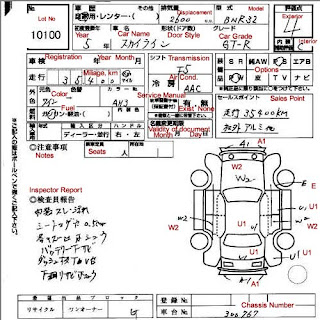The Fun Has Started
Last Wednesday, I submitted a deposit to Japanese Car Direct. This was a $500 deposit, fully refundable, that allows me access to JCD's auction site and to request JCD to submit bids on my behalf. The website has some powerful tools that will help me determine which cars I want to bid on. Each listing/lot includes pictures, vehicle history, and auction sheets. JCD will translate the auction sheets for free, and perform a 3rd party inspection if requested (this must be made at least 2.5 hours before the auction begins, but only can be performed on the day of auction). On the site, I can look up previous auctions to get an idea of selling price, as well as if a vehicle has been up for auction more than once. All this is great and very helpful, but I was surprised how quickly the auction process happens, and the amount of quick thinking work that needs to happen on my side. Japan is 14 hours ahead of EST. After using the site for a couple days, it seems as though the site updates
